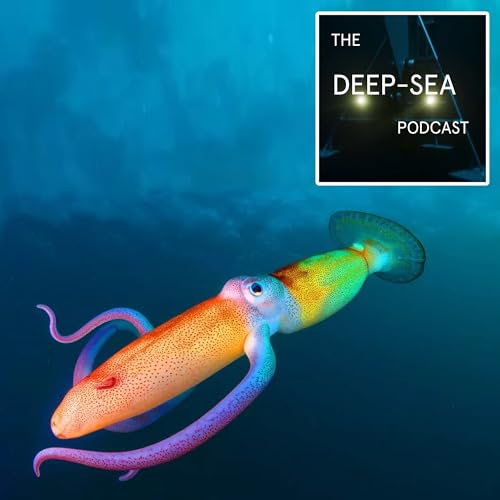Here’s our fourth episode of The Deco-Stop; a deeper look into the humans behind deep-sea science and technology. We’ve done our science dive, and now it’s time to decompress, and discuss tales at sea, career paths and the social & political aspects of deep-sea science. We have gazed into the abyss, and now it's gazing back at us.
Alan and Thom speak with Yakup Niyazi, a marine geoscientist who first saw the ocean at the age of 27. This fourth instalment in the Deco-Stop series, which focuses on the human element of deep-sea research, is an inspiring episode about one man’s journey from the desert to the bottom of the ocean, his challenges, achievements, and the deep community support he received along the way.
Check out our lovely new website, where you can find more detailed notes, images and links to the wider reading.
In this episode… Welcome back to the Deep-Sea Podcast, this month we have a heartwarming Deco Stop episode and are again exploring …‘the human element in deep sea stories..’ - Alan
In our fourth instalment of the Deco-Stop series, Alan and Thom speak with Yakup Niyazi about his journey from the edge of the Asian Desert to the bottom of the ocean. An ethnic Uyghur who grew up in the city of Aksu, at the edge of the Taklamakan Desert in Central Asia, Yakup grew up not only physically but also emotionally and culturally removed from the sea. Yakup's early experiences pose some interesting questions: What is it like to grow up in a culture that doesn’t really have a concept of the ocean, and few descriptive words for the ocean? How do you interact with the ocean if your only experiences are from movies and television?
His incredible story is filled with overcoming adversity, fulfilled dreams, landscapes (and seascapes) that come full circle, and a deeper appreciation of the ocean than most people will ever experience. Despite humble beginnings, Yakup has an impressive roster of achievements and a social circle of supportive connections who only want to see him succeed further.
This inspiring episode reminds us that, regardless of our original circumstances, the world is a vast place filled with incredible opportunities. One day, you might find yourself exiting a hadal submarine, surrounded by the heartwarming cheers of friends and colleagues, having successfully visited the bottom of the ocean you only saw for the first time at age 27.
“I was a camel before, from the desert, but now I am a shark swimming in the ocean”- Yakup Niyazi
Support the show The podcast is self-sustaining (just) thanks to our lovely listeners. Thom and Alan take no money for the show. All money is put back into running it. Here’s a link to our page on how to support us, from the free options to becoming a patron of the show. We want to say a huge thank you to those patrons who have already pledged to support us.
Check out our podcast merch here!
Feel free to get in touch with us with questions or your own tales from the high seas on:
podcast@deepseapod.com
We’d love to actually play your voice, so feel free to record a short audio note on our brand new answerphone!
https://www.speakpipe.com/deepseapodvoicemail
Thanks again for tuning in; we’ll deep-see you next time!
Find out more Social media BlueSky: @deepseapod.com
Twitter: @DeepSeaPod
Instagram: @deepsea_podcast
Keep up with the team on social media Twitter: Alan - @Hadalbloke
Thom - @ThomLinley
Instagram: Thom - @thom.linley
Inkfish - @inkfishexpeditions
BlueSky: Thom @thomaslinley.com
Credits Logo image: Georgia Wells
Theme: Going Home by Harvey Jones
 38 mins
38 mins 1 hr and 11 mins
1 hr and 11 mins 38 mins
38 mins 38 mins
38 mins Sep 8 20251 hr and 33 mins
Sep 8 20251 hr and 33 mins 32 mins
32 mins Aug 3 202556 mins
Aug 3 202556 mins 31 mins
31 mins

